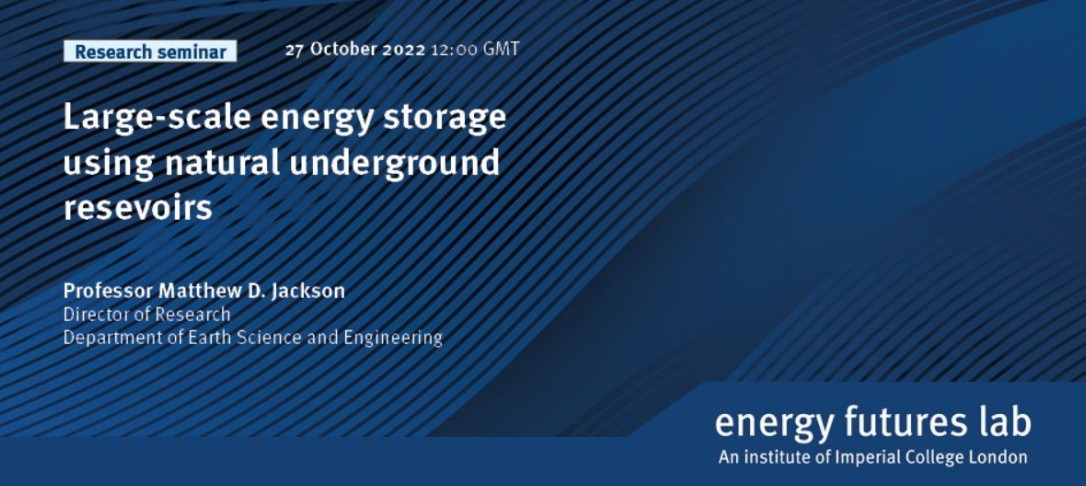
Large-scale energy storage using natural underground reservoirs
The development and deployment of technology for efficient, large-scale, low-cost energy storage is a ‘grand challenge’ that is central to society’s urgent need to source sustainable, low carbon energy.
Large-scale energy storage is essential to decarbonize electricity generation, buffering imbalances in demand and intermittent renewable supply which create price instability and risk of power outages. Large-scale energy storage can also be used to decarbonize heating and cooling of buildings, by capturing and storing waste heat in summer to deliver heating in winter, and waste cool in winter to deliver cooling in summer. Large-scale storage of hydrogen is essential to transition to a hydrogen economy.
Subsurface energy storage (SES) offers a potential solution to this grand challenge by delivering storage at much larger capacity than other approaches (for example, the UK’s thermal storage capacity is of order PWh) because it exploits the very large volumes of porous and permeable reservoir rock naturally available underground. Energy is transferred into and out of the reservoir using boreholes and a carrier or storage fluid such as groundwater or hydrogen. Power capacity can be scaled to meet demand using multiple storage reservoirs accessed by numerous boreholes (for example, the UK’s estimated thermal discharge capacity is of order 10’s GW). Subsurface heat storage efficiency increases over time (of order 60-95% after 10 years) and can also exploit natural (geothermal) heat present at depth.
SES is a key candidate technology for large-scale energy storage in the UK, because the UK hosts many porous and permeable aquifers and hydrocarbon reservoirs that are storage targets. Existing infrastructure servicing end-of-life hydrocarbon reservoirs could be re-engineered for SES, reducing capital costs and delaying decommissioning costs. The potential economic and societal benefits to the UK are large: low and stable green energy costs, re-use of industrial infrastructure and a route to redeploy some of the UK’s experienced oil and gas workforce. Widespread deployment of SES would deliver a transformative change in UK storage capacity, facilitating the significant increases in low carbon energy required for the UK to achieve net-zero by 2050.
Biography:
Matthew D. Jackson is Professor in Geological Fluid Mechanics and Director of Research in the Department of Earth Science and Engineering, Imperial College London. His research is broadly focussed on subsurface fluid flow and transport across a wide range of applications, including energy storage. He leads the Novel Reservoir Modelling and Simulation (NORMS) group at Imperial College. He recently received the Alfred Wegener Award of the European Association of Geoscientists and Engineers (EAGE) for ‘outstanding scientific and technical advancement of EAGE’s disciplines’ with a particular focus on the energy transition. He has also received the Norman Falcon Award of the EAGE and served as Distinguished Lecturer of the AAPG. Jackson holds a B.S. degree in physics from Imperial College and a Ph.D. in geological fluid mechanics from the University of Liverpool.
About Energy Futures Lab
Energy Futures Lab is one of seven Global Institutes at Imperial College London. The institute was established to address global energy challenges by identifying and leading new opportunities to serve industry, government and society at large through high quality research, evidence and advocacy for positive change. The institute aims to promote energy innovation and advance systemic solutions for a sustainable energy future by bringing together the science, engineering and policy expertise at Imperial and fostering collaboration with a wide variety of external partners.


